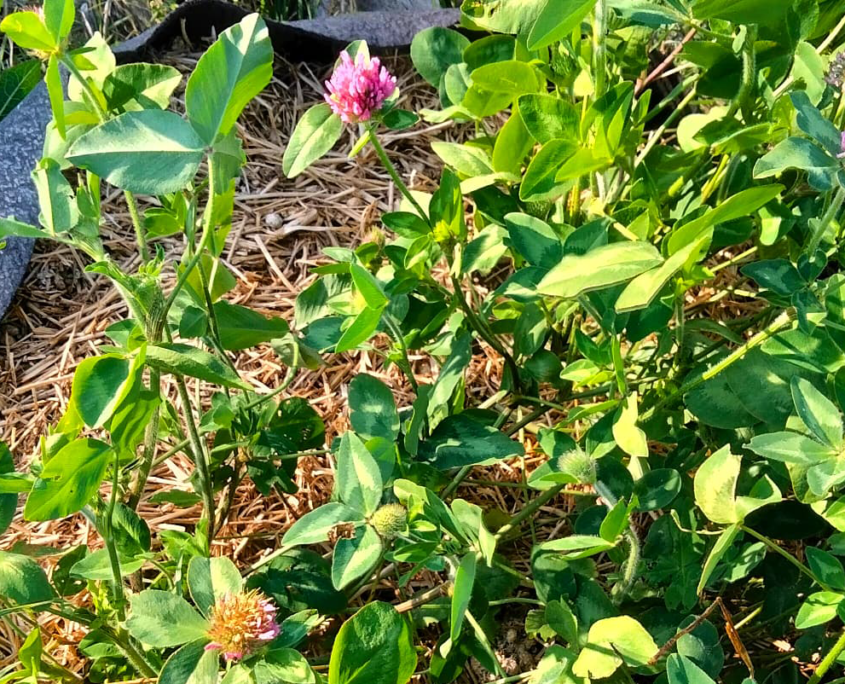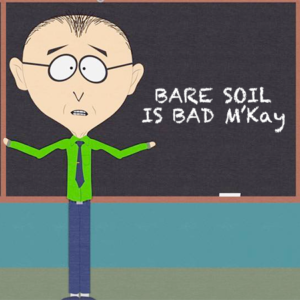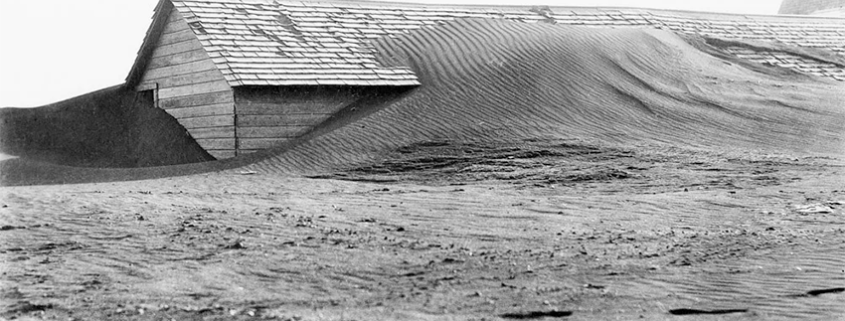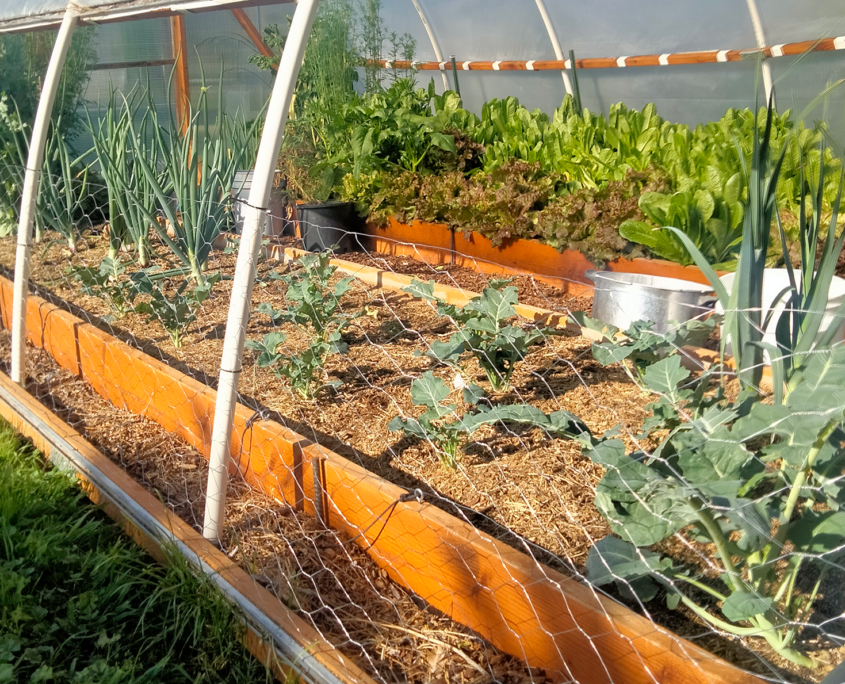Bare soil can have detrimental effects on soil biology and plant health due to several reasons:
- Soil erosion: Without any protective cover, bare soil is susceptible to erosion caused by wind and water. Erosion removes the top layer of fertile soil, which contains organic matter, nutrients, and beneficial microorganisms. This loss of soil can degrade soil quality and negatively impact plant growth.
- Moisture loss: Bare soil is prone to rapid evaporation of moisture. Sunlight and wind can dry out the soil quickly, leading to drought stress for plants. Insufficient moisture availability can hinder root growth, nutrient uptake, and overall plant health.
- Temperature extremes: Exposed soil can experience extreme temperature fluctuations. It heats up more quickly in hot weather and cools down rapidly in cold weather. Such temperature extremes can stress plant roots, impede germination, and affect the activity of soil organisms.
- Weed competition: Bare soil provides an ideal environment for weeds to establish and proliferate. Weeds compete with desired plants for nutrients, water, and sunlight. They can outcompete and suppress the growth of desired plants, leading to reduced crop yields and diminished plant health.
- Nutrient depletion: Unprotected soil is more vulnerable to nutrient loss through leaching. Rainwater or irrigation can carry away essential nutrients, leaving the soil depleted and less fertile. This nutrient depletion can limit plant growth and weaken overall plant health.
- Soil compaction: When soil is bare, it is more susceptible to compaction caused by foot traffic, heavy machinery, or rainfall impact. Compacted soil has reduced pore space, limiting oxygen availability to plant roots and soil organisms. This can impede root growth and negatively impact soil biology.
- Lack of organic matter: Bare soil lacks the organic matter that is essential for maintaining soil fertility and supporting soil biology. Organic matter contributes to soil structure, water-holding capacity, and nutrient availability. Without organic matter inputs, the soil becomes less fertile and less conducive to supporting healthy plant growth.
- Loss of soil biodiversity: Soil organisms play crucial roles in nutrient cycling, decomposition of organic matter, and suppression of plant pathogens. Bare soil provides an unfavorable environment for many soil organisms, leading to a decline in soil biodiversity and the loss of beneficial interactions that support plant health.
Mulch can significantly improve soil quality, enhance soil biology, and promote plant health in several ways:
- Moisture retention: Mulch acts as a protective layer, reducing moisture evaporation from the soil surface. By conserving water, it helps maintain soil moisture levels, preventing drought stress in plants and promoting healthy root development.
- Temperature moderation: Mulch acts as an insulating layer, reducing temperature extremes in the soil. It helps keep the soil cooler during hot weather and warmer during colder periods, providing a more favorable environment for plant growth.
- Weed suppression: A layer of mulch helps suppress weed growth by blocking sunlight and preventing weed seeds from germinating. This reduces competition for resources between weeds and desired plants, allowing them to thrive.
- Soil erosion prevention: Mulch helps protect the soil from erosion caused by wind and water. It acts as a barrier, preventing soil particles from being washed or blown away. This is especially important on sloping landscapes or in areas prone to heavy rainfall.
- Organic matter addition: Organic mulches, such as wood chips, straw, or compost, gradually break down over time. As they decompose, they contribute organic matter to the soil, improving its structure and fertility. Organic matter enhances the soil’s ability to retain moisture, nutrients, and beneficial microorganisms.
- Nutrient cycling: As organic mulches decompose, they release nutrients into the soil. These nutrients become available to plants, supporting their growth and overall health. Mulch also helps prevent nutrient leaching by reducing the impact of heavy rainfall or excessive irrigation.
- Soil aeration and compaction reduction: Certain mulches, like wood chips or straw, create air pockets in the soil as they break down. This improves soil aeration, allowing oxygen to reach plant roots and supporting the activity of beneficial soil organisms. Mulch also helps alleviate soil compaction, making it easier for roots to penetrate the soil.
- Beneficial soil microbiology: Mulch provides a habitat and food source for beneficial soil organisms, including earthworms, fungi, and bacteria. These organisms contribute to the soil’s natural ecosystem, breaking down organic matter, improving nutrient availability, and suppressing harmful pathogens.
- pH regulation: Some types of mulch, such as pine needles or wood chips, can slightly acidify the soil as they decompose. This can be beneficial for plants that prefer acidic conditions, helping to maintain the optimal pH range for their growth.

Cover crops provide numerous benefits to soil biology and plant health, including:
- Soil erosion prevention: Cover crops protect the soil surface from wind and water erosion. Their dense root systems and above-ground biomass create a physical barrier that reduces soil movement and helps retain topsoil, preserving valuable nutrients and organic matter.
- Organic matter addition: Cover crops contribute to the organic matter content of the soil when they are incorporated or left as residues. As cover crops decompose, they release nutrients and organic compounds into the soil, improving soil structure, moisture retention, and nutrient availability. Increased organic matter supports beneficial soil organisms and enhances overall soil fertility.
- Nitrogen fixation and nutrient cycling: Certain cover crops, such as legumes (e.g., clover, vetch, peas), have the ability to fix atmospheric nitrogen through a symbiotic relationship with nitrogen-fixing bacteria. This process converts nitrogen into a plant-available form, enriching the soil with this essential nutrient. When cover crops are terminated, the accumulated nitrogen can be released and utilized by subsequent crops, reducing the need for synthetic fertilizers.
- Weed suppression: Cover crops can suppress weed growth through shading and competition for resources. Their dense canopy restricts sunlight from reaching weed seeds, inhibiting germination and reducing weed establishment. This helps minimize competition with cash crops and reduces the need for herbicides.
- Moisture conservation: The presence of cover crops helps retain soil moisture by reducing evaporation and increasing water infiltration. Their dense root systems enhance soil structure, allowing for better water retention and reducing water runoff. This helps maintain soil moisture levels, benefiting plant growth and reducing irrigation needs.
- Soil structure improvement: Cover crop roots penetrate the soil, creating channels and pores that improve soil structure and promote aeration. This allows for better movement of water, nutrients, and oxygen in the soil, supporting root development and enhancing the activity of beneficial soil organisms.
- Disease and pest suppression: Some cover crops, such as certain brassicas (e.g., mustard), can help suppress soilborne diseases and pests. They release bioactive compounds that can inhibit the growth of pathogens and disrupt pest life cycles. This can contribute to healthier plants and reduce the need for chemical interventions.
- Biodiversity promotion: Cover crops provide habitat and food sources for beneficial insects, earthworms, and other soil organisms. They support diverse soil microbiota and beneficial predators that can contribute to natural pest control and enhance overall ecosystem resilience.
- Soil pH balance: Certain cover crops, such as buckwheat, can influence soil pH by releasing organic acids during decomposition. They can help balance soil pH, making it more favorable for specific crops that thrive in slightly acidic or alkaline conditions.
In summary…bare soil ain’t it. Whether you use a cover crop or mulch, you will be improving the soil every season.





